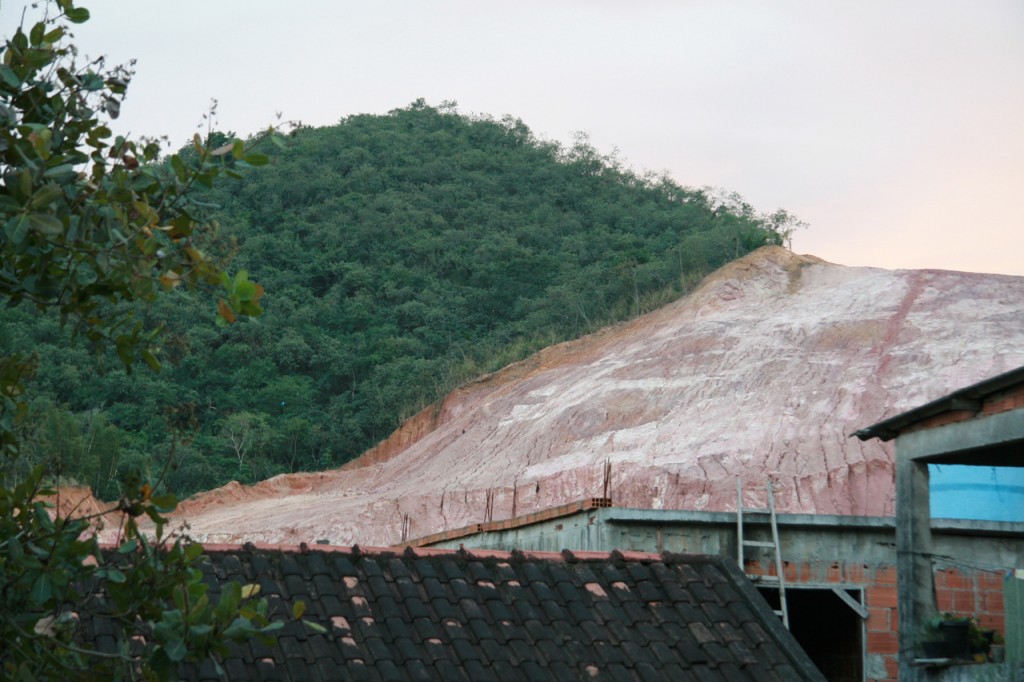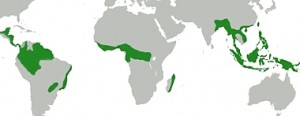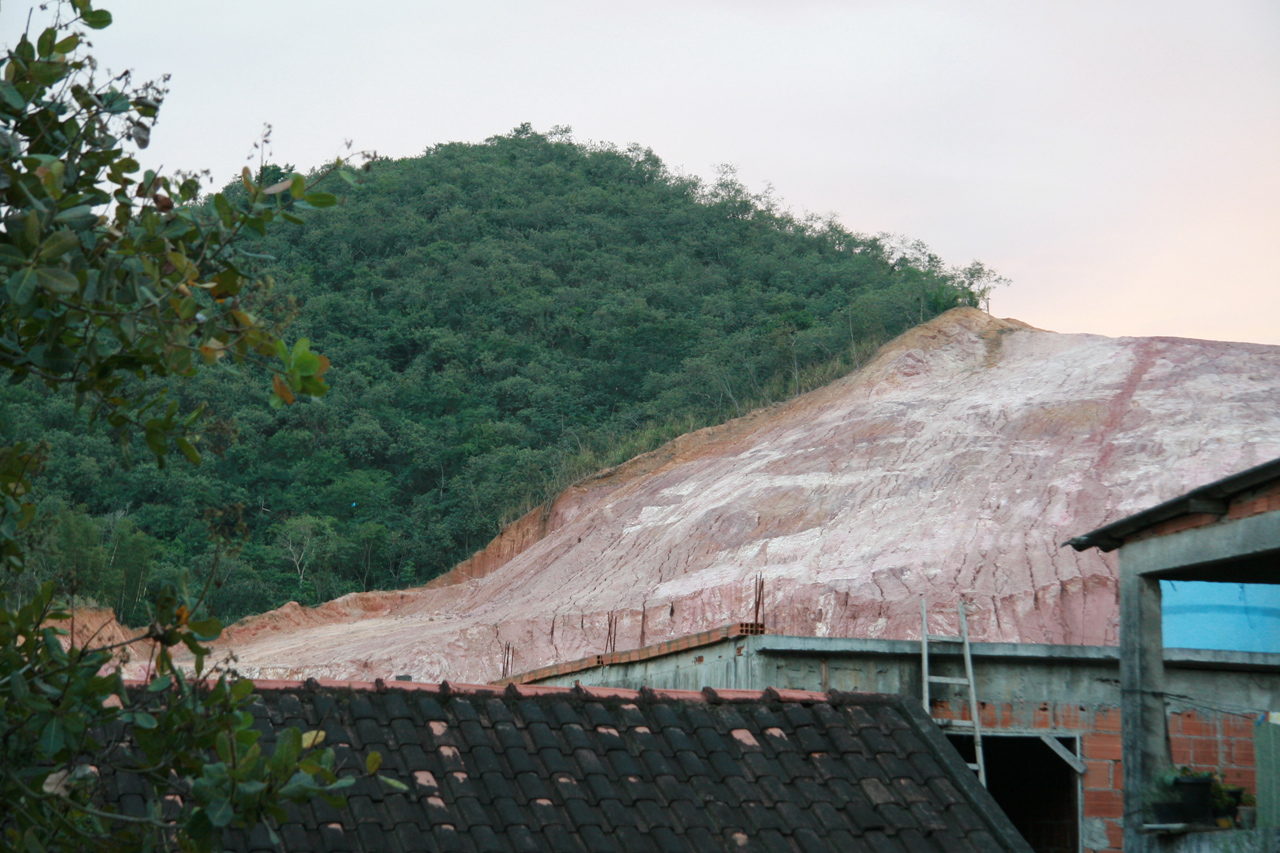In Africa, South America and Southeast Asia agricultural demand has lead to deforestation that is climate altering. We’ve known that deforestation and forest degradation contributes to increases in greenhouse gases through loss of biomass, decomposition and fires.
But scientists are now looking at a potential ripple effect from deforestation. A study appearing this month in the journal Nature describes the role tropical rainforests play in regulating local and global weather patterns through transpiration. By cutting down rainforests we are in effect, removing rain. This rainfall reduction has always been noted locally within the vicinity of cleared forest but in the study, using remote satellite sensing, and computer simulations, the researchers demonstrate that air passing over a rainforest produces at least twice as much rain as air passing over deforested areas and that this has a significant downstream effect.

The study further looks at rates of deforestation and predicts that if current trends continue rainfall in places like the Amazon basin, home to the largest rainforests on the planet, will decline between 12 and 21% by 2050.
A similar study in 2005 conducted by researchers at Duke University using NASA-compiled data also saw a correlation between deforestation and global rainfall patterns. In that study the researchers concluded:
- Amazon deforestation alters rainfall in an area extending from Mexico through the Gulf of Mexico to Texas
- Central African deforestation impacts rainfall in both the upper and lower American Mid-West
- Southeast Asian deforestation alters rainfall in China and Southeastern Europe
How can cutting a tree in Southeast Asia alter rainfall in Greece? Doesn’t this sound like the “butterfly effect?” Well according to the researchers deforestation doesn’t just impact moisture levels in the lower atmosphere. It also changes wind and moisture patterns in the upper atmosphere and hence with less moisture generating rainforest, rainfall patterns thousands of kilometers away are impacted.
Deforestation isn’t modifying the total amount of precipitation the Earth receives annually. What is being altered is the pattern and distribution of rain. The consequences include drier conditions during growing seasons, or alterations to monsoonal rains, or increased frequency of violent weather events.

Why don’t temperate forest logging practices lead to similar results? The boreal and temperate forests of North America, Europe and Asia have experienced natural cycles of deforestation from wildfires and insect-induced mortality. For example the Western Pine Beetle has destroyed thousands of square kilometers of trees in the Pacific Northwest over the last decade. Such forest clearing events, therefore, are part of the normal pattern. Clear cutting of forests as practiced for years in the boreal and temperate rainforests of Canada, may impact rainfall in areas remote from the forest themselves but replanting in these areas mitigates against long term weather disturbances. That is not the case in tropical forests where once land is cleared it is used for other purposes.









